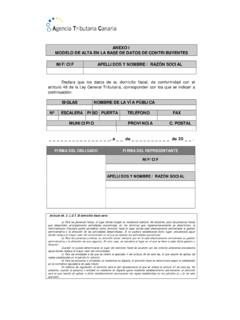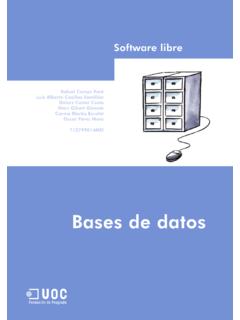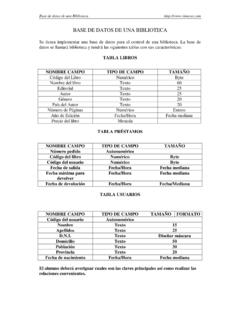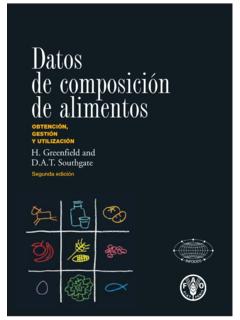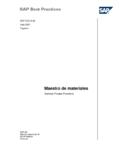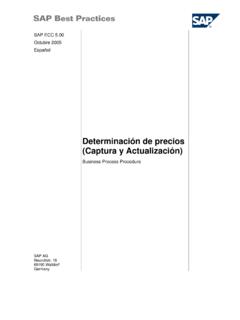Transcription of UNHCR Resettlement Handbook
1 UNHCR Resettlement HandbookAcknowledgmentsThis revised UNHCR Resettlement Handbook is the product of close consultation and collaboration among UNHCR staff and Resettlement partners. The Division of International Protection (DIP) particularly wishes to thank the many colleagues and partners around the world who contributed to the Handbook revision process, and provided input and feedback on the drafts. This revision has been made possible thanks to the support of the Canadian Consultant Management this HandbookThe UNHCR Resettlement Handbook offers Resettlement management and policy guidance to UNHCR staff, and is a key reference tool on global Resettlement policy and practice for Resettlement countries, NGOs and other partners. This revision of the Resettlement Handbook incorporates updates to UNHCR policy and practice since the release of the 2004 edition of the Handbook .
2 The previous annexes are replaced by website hyperlinks to reference documents, some of which are internal documents accessible only to UNHCR States have described their policies and programmes in individual Country Chapters which are an integral part of this Handbook . As these Country Chapters are subject to frequent changes, they are not included in the printed Handbook , but are available online at 2011, United Nations High Commissioner for RefugeesAny part of the UNHCR Resettlement Handbook may be reproduced, translated into other languages or adapted to meet local needs without the prior permission of UNHCR , provided that all parts are distributed free of charge and UNHCR is send copies of any adaptation or translation into other languages to: Resettlement Service, Division of International ProtectionUnited Nations High Commissioner for Refugees94, rue de Montbrillant1202 Geneva, of International ProtectionGenevaRevised edition July 2011 FOREWORD 1 PREFACE 31.
3 Resettlement WITHIN UNHCR s MANDATE: INTERNATIONAL PROTECTION AND THE SEARCH FOR DURABLE SOLUTIONS International Legal Framework Persons of Concern to UNHCR The Three Durable Solutions 282. THE EVOLUTION OF Resettlement The History of Resettlement Enhancing the Use of Resettlement Strengthening Global Management of Resettlement in UNHCR Further Expanding the Resettlement Base Current Resettlement Environment and Challenges 673. REFUGEE STATUS AND Resettlement Refugee Status as a Precondition for Resettlement Consideration Who is a Refugee? Refugee Status Determination under UNHCR s Mandate The Refugee Definition of the 1951 Convention Eligibility under the Broader Refugee Definition Exclusion from Refugee Status under International Refugee Law Special Considerations Exclusion and Resettlement Recognizing a Quality RSD Assessment 1034.
4 MANAGING Resettlement EFFECTIVELY Resettlement Management and Coordination Safeguards in the Resettlement Process Standard Operating Procedures (SOPs) Combating Fraud and Corruption in the Resettlement Process Managing Resettlement Expectations within the Refugee Population Security Measures 147 CONTENTS UNHCR Records Management The Importance of Ongoing Resettlement Training Resettlement Statistics and Data Managing Stress in a Resettlement Operation 1665. PROTECTION CONSIDERATIONS, AND THE IDENTIFICATION OF Resettlement NEEDS Key Protection Considerations in the Identification Process Specific Protection Needs and Potential Vulnerabilities Specific Protection Risks and Considerations The Process for Identifying Resettlement Needs Tools and Methodologies to Assist with Identification of Needs Referral of Individual Cases for Resettlement Consideration Identifying Groups in Need of Resettlement Challenges in Identification 2396.
5 UNHCR Resettlement SUBMISSION CATEGORIES Basic Considerations Legal and/or Physical Protection Needs Survivors of Violence and/or Torture Medical Needs Women and Girls at Risk Family Reunification Children and Adolescents at Risk Lack of Foreseeable Alternative Durable Solutions 2877. BASIC PROCEDURES TO FOLLOW IN PROCESSING Resettlement SUBMISSIONS Safeguards in the Processing of Resettlement Submissions Case Verification and Assessment Conducting Interviews Case Composition Preparation of a Resettlement Registration Form (RRF) UNHCR Submission State Selection Withdrawal Resubmission The Importance of Counselling throughout the Process Pre-departure Arrangements and Monitoring 3768. PARTNERSHIP, LIAISON AND MEDIA RELATIONS Resettlement Partnerships Partners Deployment Programmes Partnerships along the Resettlement Continuum Advocacy and Liaison Media Relations 397 ACRONYMS 403 GLOSSARY 407 FOREWORD1 FOREWORDS ince the Resettlement Handbook was produced in 1996, it has been used by hundreds of UNHCR staff and partners to help hundreds of thousands of refugees start new lives in new countries.
6 It is an indispensable tool for an indispensable solution. Indeed, as the resilience of conflict causes voluntary repatriation opportunities to remain mired in two-decade lows, and with countries heavily burdened by hosting large numbers of refugees reluctant to expand possibilities for local integration, Resettlement has grown even more vital as a durable the same time it continues to serve its longstanding role as a mechanism for protecting individuals. It does so by removing particular individuals from situations of risk, but also by demonstrating the availability of a solution without which refugees may undertake highly precarious journeys to find safety and is a partnership activity. Without the generosity, commitment and expertise of States, NGOs and others, it could not take place.
7 Similarly, this comprehensive revision of the Resettlement Handbook , the first since 2004, has only been possible through consultations and collaboration with a wide range of stakeholders. As the reference text for UNHCR s Resettlement work, we have made a special effort to update the Resettlement Handbook to reflect the changing nature of displacement (to urban and other non-camp settings) and the importance of using Resettlement strategically. The Handbook sets out standardized methodologies for identifying Resettlement needs and expediting Resettlement processing, including the use of Emergency Transit Facilities. It provides a wide sampling of relevant soft law, such as Excom Conclusions on Women and Girls at Risk, Children at Risk, Refugees with Disabilities and Protracted Refugee Situations.
8 It sets out much more fully the specific needs of vulnerable groups and reinforces the centrality of age, gender and diversity appropriate approaches to all UNHCR s Resettlement and protection efforts. Additional emphasis is also placed on preserving the integrity of the Resettlement process and anti-fraud the number of States with ongoing Resettlement programmes has risen to 25, the number of places available is still significantly outstripped by refugees in need of them. The Handbook includes helpful advocacy information for practitioners and supporters seeking to expand the number of Resettlement opportunities. On this and virtually every other issue relevant to Resettlement , the Handbook provides good practice guidance. Nothing makes a more compelling case for Resettlement than seeing it done right.
9 I am very proud of this Handbook . With it, and your continuing commitment, I am confident hundreds of thousands more refugees will begin new lives through Resettlement . Ant nio Guterres United Nations High Commissioner for RefugeesFOREWORD PREFACE3 PREFACE Introducing resettlementDefinitionResettlement involves the selection and transfer of refugees from a State in which they have sought protection to a third State which has agreed to admit them as refugees with permanent residence status. The status provided ensures protection against refoulement and provides a resettled refugee and his/her family or dependants with access to rights similar to those enjoyed by nationals. Resettlement also carries with it the opportunity to eventually become a naturalized citizen of the Resettlement country.
10 FunctionsResettlement serves three equally important , it is a tool to provide international protection and meet the specific needs of individual refugees whose life, liberty, safety, health or other fundamental rights are at risk in the country where they have sought refuge. Second, it is a durable solution for larger numbers or groups of refugees, alongside the other durable solutions of voluntary repatriation and local integration. Third, it can be a tangible expression of international solidarity and a responsibility sharing mechanism, allowing States to help share responsibility for refugee protection, and reduce problems impacting the country of within UNHCR s mandateThe Office of the United Nations High Commissioner for Refugees ( UNHCR ) was established on 1 January 1951 by UN General Assembly Resolution 319 (IV).










